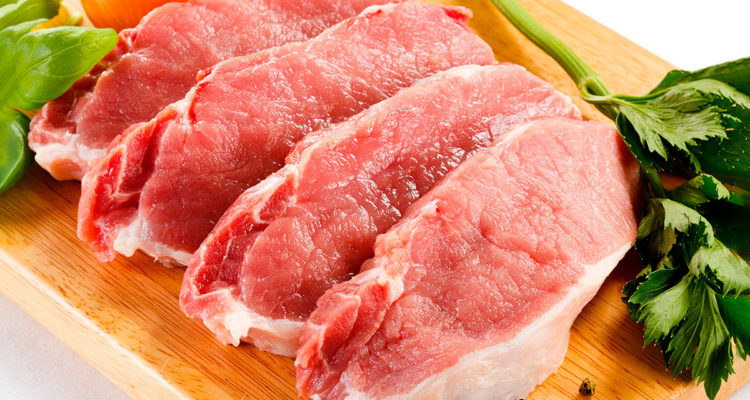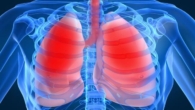
What is useful and harmful pork and how to choose a really good meat
0
Pork has a reputation as fatty, dirty, heavy meat. Some are worried about the fact that pigs eat everything in a row, some are worried about the fact that it contains a lot of saturated fat and cholesterol. There is also an opinion that pork should be fried almost to the state of “sole” – so that all parasites die. We explain why everything is not as scary as it may seem at first glance, we debunk popular myths about pork and we know how it is useful and harmful.
Common myths about pork
Myth: because pigs eat waste, their meat is contaminated with harmful substances
In livestock complexes, pigs are fed with combined feed. In addition, meat that goes on sale in trade networks and official markets is strictly monitored by veterinary services. Research is carried out according to sanitary-chemical, microbiological, physico-chemical, radiological, parasitological indicators, the presence of antibiotics. If the product meets certain parameters, it will simply not be allowed to be sold.
Myth: pork is very fatty
It all depends on the part of the carcass and the cooking method. So, 100 g of lean pork can have a little less than 30 g of fat, the fatty part can contain up to 49 g of fat. If, for example, excess fat is cut from a pork chop, its amount in the finished product will be reduced several times. A lot also depends on the culinary processing of the meat, for example, if you roast pork on a grill, some of the fat will drain.
Myth: pork is high in antibiotics
In fact, this fear is greatly exaggerated. As a rule, tests reveal trace amounts of these substances. At the same time, the number of such products is insignificant. For those who are still afraid, experts remind that the original amount of antibiotics in meat is reduced during heat treatment (but it should be borne in mind that part of it goes into the broth), freezing and even simple washing – the last method reduces the antibiotic content in m by 12-25%.
Myth: if the broth turned out cloudy after cooking pork, there were many toxins in the meat
Another popular myth concerns the toxins allegedly present in pork. Assessing their presence or absence by the level of transparency of the broth is, in principle, pointless. If it was cooked on pre-frozen meat, it will turn out a little cloudy, and this is normal. Broth cooked on well-chilled meat should be clear. However, its turbidity is not a sign of “toxins”, but rather an indication that the meat has begun to spoil.
Myth: it is dangerous to eat pork because it contains parasites
Myth: pork is smelly
The meat of boars – uncastrated males – really has a characteristic smell due to androstenone, a steroid structurally related to testosterone. At the same time, the sensitivity to this smell is different for different people, it is determined by genes and depends on a specific olfactory receptor. However, the sale of boar meat in Ukraine is prohibited by veterinary control – such pork can be used for industrial processing (for example, in the production of animal feed). In addition, meat that has started to spoil can have an unpleasant smell.
Pork damage
Like other animal products, pork contains both unsaturated and saturated fats. An excess of the latter in the body can lead to an increase in low-density lipoproteins and an increase in the risk of cardiovascular diseases. The American Heart Association recommends consuming just over 13 grams of saturated fat each day.
Red meat, like pork, can form part of a balanced diet. But eating a large amount of red and processed (preserved by smoking, salting, salting or adding preservatives) meat increases the risk of developing some types of cancer, experts of the National Institute of Oncology (USA) warn. Scientists note: additional research is needed to understand how red and processed meat affects the risk of developing cancer. The increased risk may be attributed to the iron and fat content of red meat and/or the salt and nitrates/nitrites in processed meat. Also, when meat is cooked at high temperatures, substances are formed that can cause cancer.
Cured and smoked pork, as well as products made from it, such as bacon or ham, often contain a lot of salt. Also, limited data indicate a possible negative effect of eating processed pork on glucose and insulin metabolism.
In isolated cases, pork meat can cause allergies. According to NY Allergy & Sinus Centers, symptoms include:
- skin reactions;
- gastrointestinal symptoms, including nausea, vomiting, and cramping;
- runny or stuffy nose;
- slight increase in temperature;
- difficulty breathing.
It is also very dangerous to eat raw, undercooked or undercooked pork. Raw meat can contain parasites and bacteria that cause serious infections in humans. Among the most dangerous are parasitic trichinella worms. Pork is one of the main sources of infection with trichinellosis, most often people become infected when eating undercooked or undercooked pork.
In addition, it is important to remember that raw meat is a perishable product. If the terms and conditions of storage are violated in pork, rotting processes begin quite quickly, pathogenic microorganisms develop, which can cause food poisoning and acute intestinal infectious diseases. To buy a high-quality and healthy product, it is important to choose meat especially carefully.
How to choose good pork: 5 tips:
- Fresh (chilled) springy pork, has a slight meaty smell, and when pressed quickly returns to its original shape.
- Good pork is pink or reddish, the shade can be lighter or darker depending on the part of the carcass and the age of the animal. The meat of adult animals is dense, light red in color with noticeable marbling. The meat of piglets and piglets (young pigs) is usually lighter.
- The presence of a white coating indicates that the meat has begun to spoil.
- The piece of pork should be slightly moist when cut. , but not sticky. Meat juice should be transparent.
- When buying pork in factory packaging, you should pay attention to the production date and expiration date, as well as recommended storage conditions.
The benefits of pork
- calcium;
- iron;
- phosphorus;
- potassium;
- magnesium;
- li>
- sodium;
- zinc;
- copper;
- manganese;
- selenium;
- vitamins A, E, D and group B.
Among the latter, nutritionists especially highlight vitamin B12, which helps regulate the vital activity of nerve cells in the brain and is found in products of animal origin. B vitamins also help to create and restore cell DNA, produce hormones and erythrocytes – red blood cells.
Pork is rich in oleic acid, which is considered one of the most valuable and healthy unsaturated fatty acids.
p>
Pork broth, jelly, as well as dishes prepared by stewing meat with cartilage and bones, contain collagen – a protein that forms the basis of connective tissue. Research shows that eating enough collagen helps strengthen and maintain healthy hair and skin. It is also beneficial for joint health.









Leave a Reply